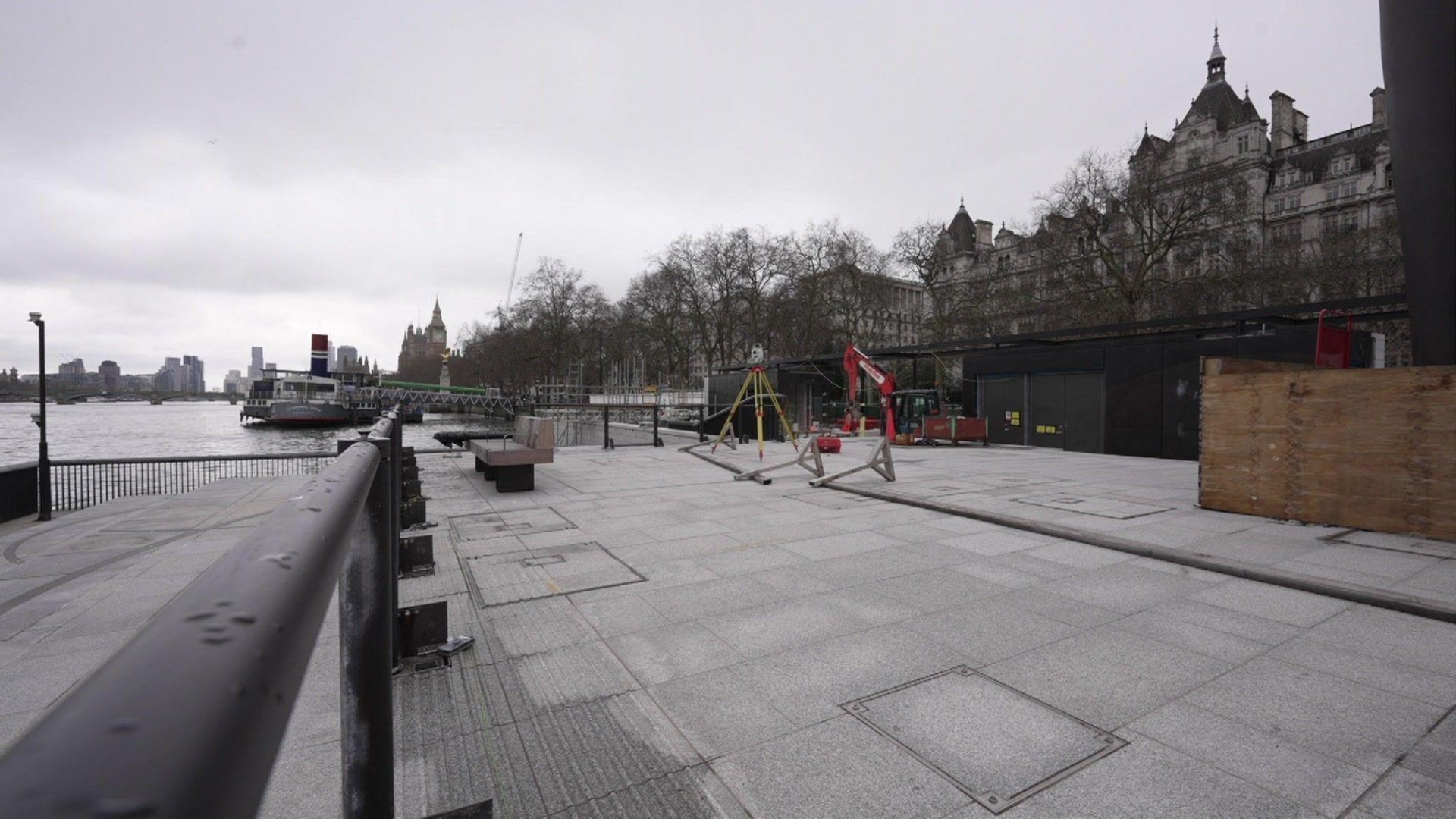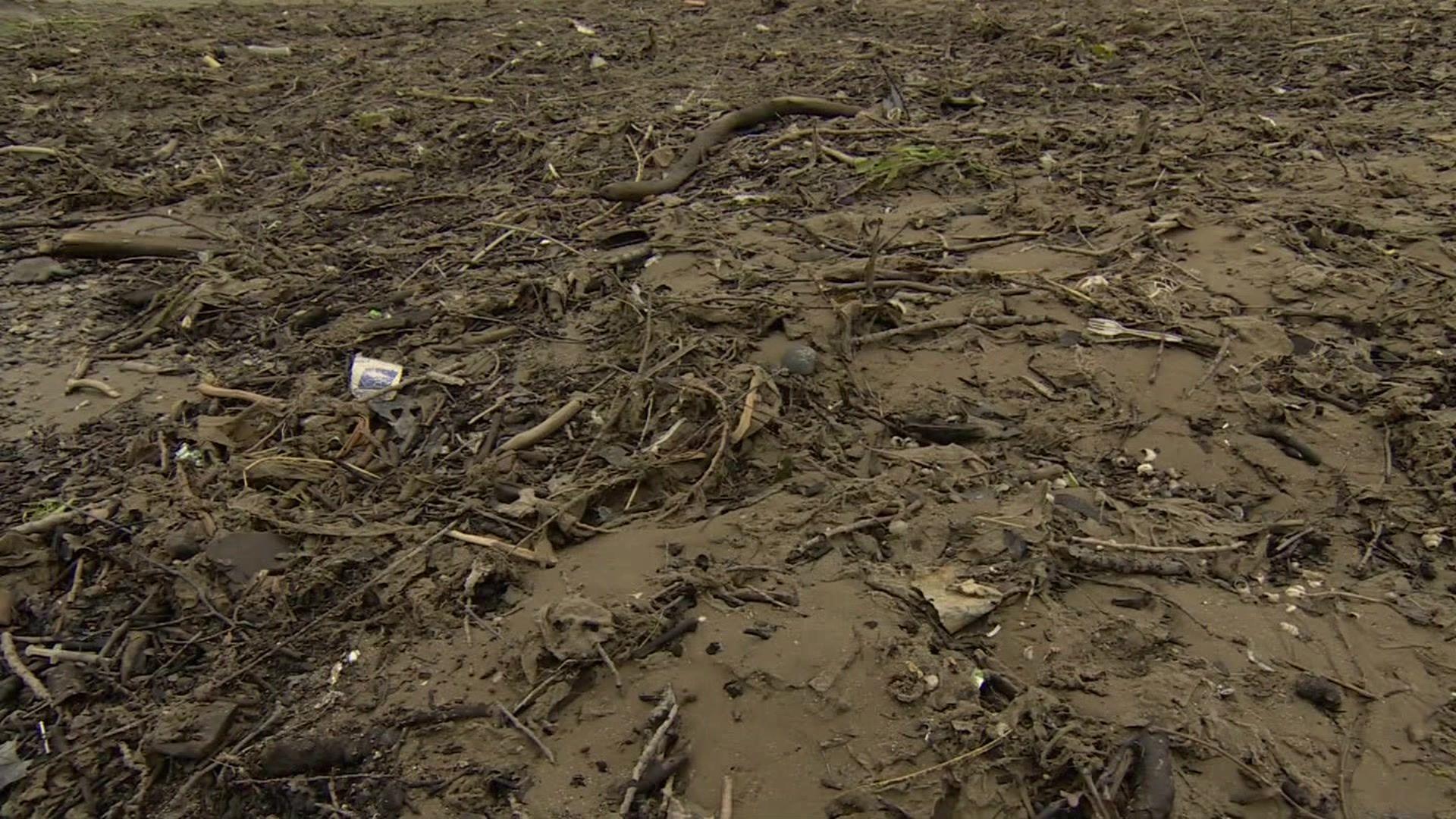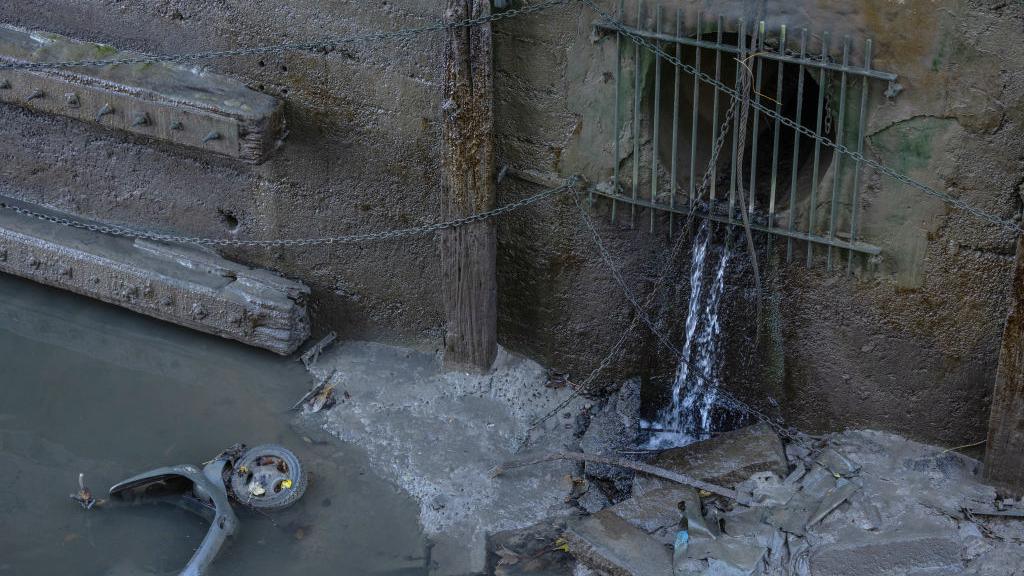London's new 'super sewer' to begin tests in summer
Thames Tideway Tunnel: Inside London's new 'super sewer'
- Published
London's new "super sewer" - or the Thames Tideway Tunnel, as it is officially known - will begin testing in the summer, the company behind it has said.
The tunnel is nearly 16 miles (26km) long and stretches unseen beneath the River Thames.
It will connect 34 storm overflow drains and take the sewage to be treated at a works in Beckton, east London, which the company delivering the project, Tideway, says will help clean up the river.
Currently when there is a storm, the existing drains cannot cope and the overflow ends up in the Thames.
Workers are now completing the finishing touches with 90% of the project finished – including the tunnel and the shafts.
At 24 sites along the Thames, land has been reclaimed from the river and will be made into areas accessible to the public.

Once completed, the project will create open spaces along the riverside
The tunnel itself has now been sealed and workers will not go inside it for another 10 years.
Independent charity Thames21, which calls itself the "voice for London’s waterways" backs the tunnel and said about 40 million tonnes of overflow rainwater and sewage flowed into the river every year.
A particular issue is "sewage-based wet wipes", which "enter the river through sewage pipes after they are flushed down toilets", a spokesperson for the group said.
This can lead to the build up of so-called "wet wipe islands".
Adrian Telford, an engineer on the "super sewer", said the original sewer running along embankment "was basically flowing into the river, and now we have diverted it and it goes into our new super sewer which is running underneath the Thames".
"It will clean up the river, it will increase the health of the river.”
He added that improving water quality would help reduce the number of algae blooms.

Engineer Adrian Telford says the sewer will improve the river's health
The tunnel was paid for using a regulated asset base model, Lucy Webster, the external affairs director at Tideway, said.
“What happens is we get private investment upfront, so the investors put money in to enable us to build it,” she said.
“Then bill payers pay for it over time through a contribution from their bills. So you are spreading that across many, many millions of households and we are able to keep that contribution lower."

Stopping sewage overflows should end the build up of so-called wet wipe islands
In London, it currently adds about £25 a year to Thames Water bills.
Ms Webster said the model could be used to invest in other infrastructure projects across the UK.
After a year of testing, the tideway tunnel should be fully operational in 2025.
Listen to the best of BBC Radio London on Sounds and follow BBC London on Facebook, external, X, external and Instagram, external. Send your story ideas to hello.bbclondon@bbc.co.uk, external
Related topics
- Published30 June 2023

- Published5 June 2023
